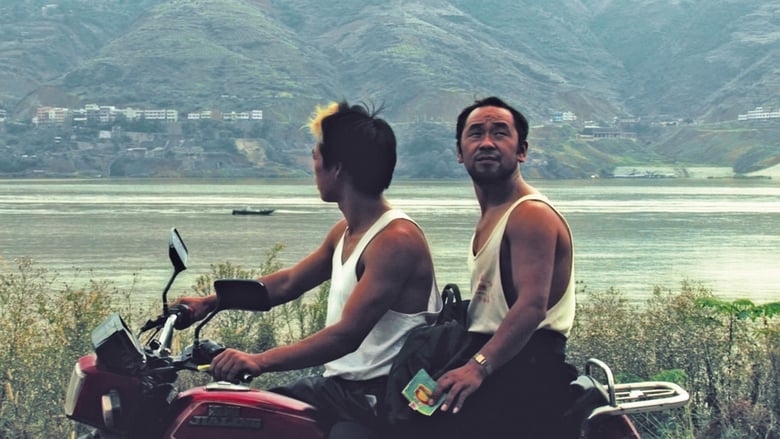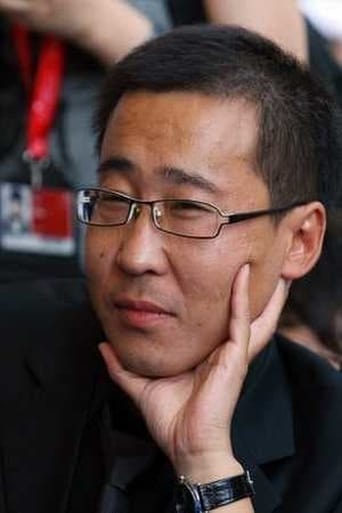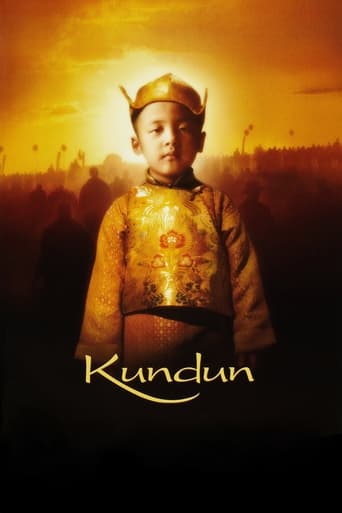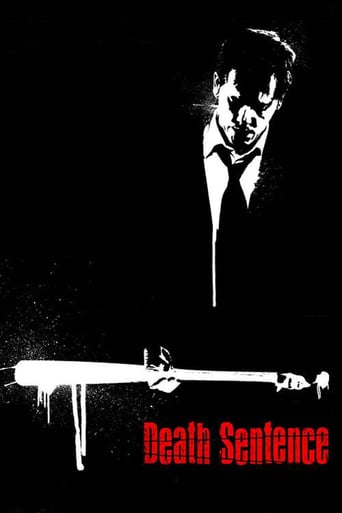

Still Life (2008)
A town in Fengjie county is gradually being demolished and flooded to make way for the Three Gorges Dam. A man and woman visit the town to locate their estranged spouses, and become witness to the societal changes.
Watch Trailer
Cast


Similar titles
Reviews
Uncertainty is at the stem of Jia Zhangke's "Still Life" and it molds itself into many forms - uncertainty as to what China's economic boom holds for its future, displaced people uncertain whether they will ever see those they have lost again, and uncertainty over whether love that is broken can ever be mended. All of this takes place in the backdrop of Fengjie village, which was at the time being upheaved for the construction of Three Gorges Dam (now complete, and the largest electricity-generating plant in the world). Zhangke's use of a real setting and detail provides for some powerful shots, and it's this type of filmmaking that has formed him into one of China's foremost artistic commentators. However, in this movie especially, his cultural scope felt almost more alienating than immersing (one of my major complaints of Apichatpong Weerasethakul's films), enough so to diminish the overall entertainment value.
Like the recent Australian drama "Jindabyne," "Still Life" examines what happens to the members of a community when the place they call home is deliberately flooded to make way for a new dam. In "Still Life," it is the city of Fengjie that now lies at the bottom of the Yangtze River, its population scattered and its submerged buildings, roads and parks nothing more than memories for those who once lived there (the Three Gorges Dam was completed in 2006). There are also plans to further raise the level of the river, resulting in the eventual loss of much of the surrounding area that still remains above water. As a result of the order to evacuate, what little is left of the city becomes ever more of a ghost town as the movie goes on.Han Sanming returns to the area after 16 long years, unaware of what has happened to the town in his absence. He then goes in search of the ex-wife and teenaged daughter he hasn't seen in all that time, seeking news of their whereabouts from family members, acquaintances and total strangers he meets along the way. In an unrelated but concomitant plot line, Shen Hong is a woman who returns to the same area to find the husband who all but abandoned her two years earlier.As directed by Zhang Ke Jia, "Still Life" is less a narrative-driven drama than a methodically-paced, contemplative look at people whose lives have been torn asunder by the "advancement" of modern technology but who have been so beaten down by an unfeeling bureaucracy that they have all but resigned themselves to a passive acceptance of their fate. Yet, all this is dealt with in an elliptical and oblique fashion as the two main characters focus primarily on the concerns of their own personal relationships and issues. But the true meaning of the film can be found in the penetrating and soul-crushing air of melancholy that hangs over the work.
Still Life (2006/2008) ****What a lonely place the world is for so many. As we lurch forward in the name of modernity we always seem ironically becoming more and more isolated as the world around us gets smaller and smaller. This conflict lies at the heart of Zhang Ki Jia's haunting film Still Life. Although the film won the Golden Lion at the Venice Film Festival in 2006 and received widespread praise, it only finally received a very limited theatrical run in North America this year. The film revolves around two stories shot and set in the Fengjie area as it is being demolished and flooded for the Three Gorges Damn (that area is now totally underwater). One involves a man looking for his wife, who left him with their daughter 16 years ago. He's worked in the mines since then, and upon arriving home does not realize that the valley has been flooded. He searches around until he finds her brother. He informs him that she works upriver on a boat now. He can't see her until her boat arrives there. In the mean time, he makes friends with a young man called Mark, who bases his personality around the roles of Chow Yun Fat. The two work demolishing old ruins by hand with sledgehammers, while waiting for the estranged wife to return to town. The second story follows a nurse who comes to the area looking for her husband, who she has not heard from in two years. She enlists the help of one of his friends to help find him. She suspects rightly that her husband is having an affair. She discovers he is now quite successful, and having an affair with his female investor. When she finally gets to see him, she walks away. When he follows she tells him she is in love with someone else and wants a divorce. Is she really? Does she really? We can suspect, but humans are funny creatures. These stories are only marginally interconnected. There are threads that connect them, but only randomly. The two are even on the same boat and witness the same strange event but are totally unaware of each other. The strange event that the two witness is only one of a few that I would dare not reveal. They seem so strangely surreal in what appears to be such a grounded film. They're perplexing, but I think serve to highlight our tiny existence in an infinite world. Jia films with a patient eye, allowing the camera to move slowly and linger on its inhabitants. It's a gorgeous looking movie, special for capturing a 2000 year old landscape in its death throws. There will never be another film like it, because those places no longer exist. That valley is the real star of the film. It's a haunting and otherworldly place where, despite the heat, the sun never shines. Despite the film's focus on the destruction of time and place and our collective loneliness in the modern world, it's also a testament to the depth and capacity of the human spirit to triumph. Yes we are but small blimps on the world's radar, a world that isolates and alienates us, but we cope and strive. How? In the connections that bond us as humans. The physical world around us may be washed away, but the friendships and connections we make - no matter how small - remind us that it is often the smallest joys in life that mean the most. And with that, we persevere.
Chinese director Zhang Ke Jia's latest film contains a wealth of fascinating real-life imagery. Still Life was filmed during the construction of the Three Gorges Dam in China and it reveals to Western audiences the astonishing destruction that this entailed. The submersion of the scenery and settlements of the valley floors proceeds in phases during the film. White lines are painted on buildings and cliff-faces to forewarn of the next projected rise in water levels; residents are forced from their homes at short notice. Buildings are torn down using sledgehammers and hard human labour, creating a bizarre landscape of broken masonry. Rubble, the raw material of the future, is carted along narrow city streets by overloaded lorries and dumped onto a fleet of cargo ships. In the wake of all this activity there lie towns and communities divided literally in two by the swelling waters.Still Life is an amazing documentary of the construction of the Dam, but its narrative is disappointingly weak. So many of the characters that fill the screen are isolated or antagonistic or exploitative, from the man hawking foreign currencies to the architect proudly admiring the new bridge across town. Jia chooses to focus on two main characters, creating two loosely intertwined plots. In the first, a husband and father searches for his wife and daughter who left him some fifteen years previously, whilst in the second an abandoned wife searches for her missing husband.These are potentially interesting stories, but they proceed at a pace that is slow even by the standards of Jia's other films. Much of the drama in these stories precedes the film itself and the camera often lingers on unmoving, unspeaking subjects. The effect is one of inertia, at first strangely engrossing, but eventually frustrating. Possibly in an attempt to alleviate the slow, slow pacing of Still Life, Jia introduces some quirky asides (watch out for the spaceship taking off), but these jar with his documentary-like approach to film-making. Rather more effective are the 'still life' moments that crop up periodically throughout the film, momentarily framing day-to-day objects such as cigarettes or tea.Although achingly slow at times, Still Life does make some interesting observations. It is intriguing to see how pop culture, transmitted by television and radio, now provides the icons for young Chinese people, where once one might have expected the songs, the sayings and the thinking to derive from Communist figureheads. The boy singing romantic pop ballads and the young man imitating a TV cop show character are symbolic of a very different culture among the young people of China. As with Jia's other films, the ideology and rhetoric of the Communist Party are largely absent, making a sort of cameo appearance when an old-fashioned workers' song plays as the ring tone on one character's mobile phone.On the other hand, we see very little protest against the construction of the dam under the gaze of the Communist Party. This is not a slight against Jia, however, since it would have been very difficult to portray this without the government intervening against his film. The unflattering portrayal of the Dam's construction and its debilitating influence on people are a wake-up call to the severe side effects of Progress.













